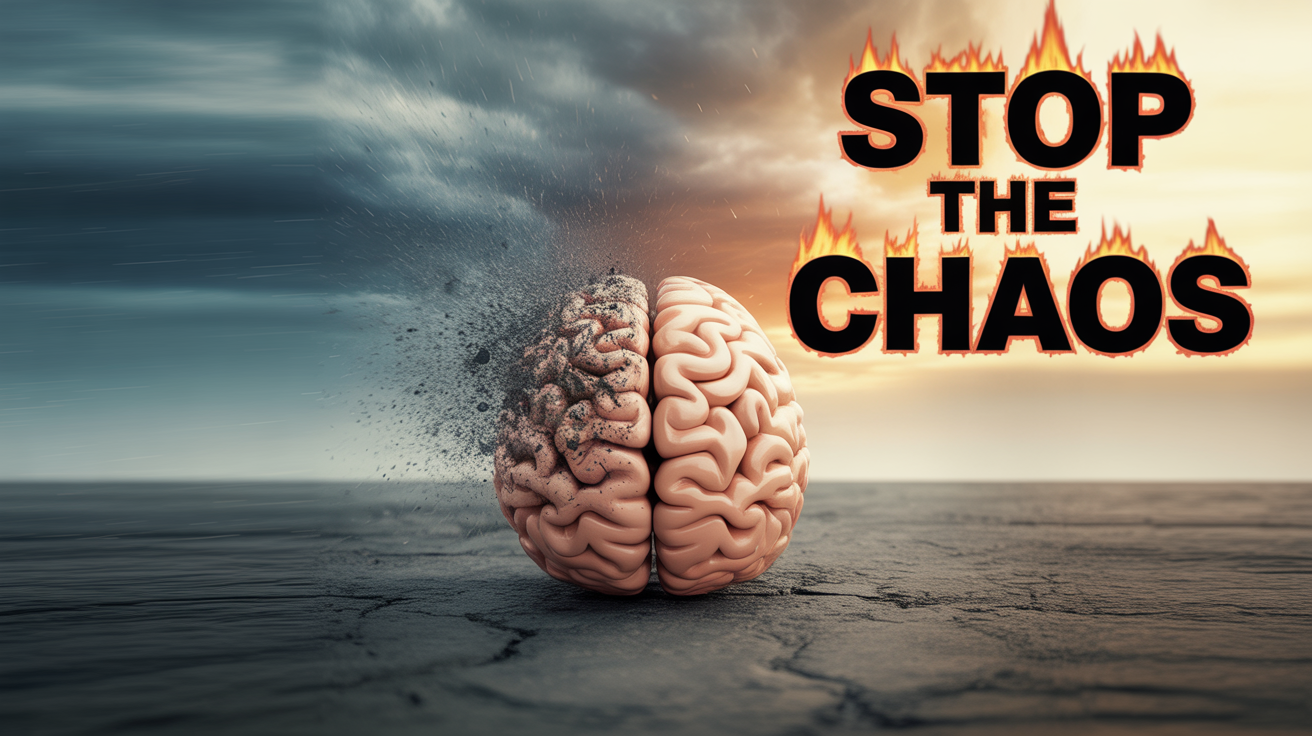Ever feel like your brain just hits a wall?
You’re trying to learn something new—a language, a piece of software, a new skill for your job. Or maybe you’re just juggling a dozen different tasks, your to-do list is a mile long, your phone is buzzing, and you can feel the deadlines breathing down your neck. And then, suddenly… nothing. It’s like your mind is an overflowing cup; any new piece of information, any new request, just spills right over the edge. You read the same sentence three times but can’t absorb it. You walk into a room and forget why. You just feel scattered, stressed, and completely stuck.
If that sounds familiar, I want you to hear this loud and clear: You aren’t broken. You’re not lazy, and you are not failing. What you’re experiencing is a universal, biological process. It’s a design feature of the human brain, and it has a name: Cognitive Overload.
It’s the single biggest barrier to learning, productivity, and frankly, our own peace of mind. But the good news is, it’s not a life sentence. Once you understand the science of *why* it happens, you can start working *with* your brain instead of constantly fighting against it.
And that’s exactly what we’re going to do. First, we’ll unpack the fascinating science of why your brain gets overwhelmed. Then, I’ll give you seven powerful, actionable strategies, all backed by neuroscience, that you can use starting *today* to get back in control, manage the overwhelm, and reclaim your focus.
Section 1: The “Why” – Unpacking Cognitive Overload
To get what’s happening when your brain shuts down, we have to look at how it’s built. Think of your memory system as having two key parts.
First, you’ve got **Long-Term Memory**. This is a massive, sprawling library—a hard drive with practically unlimited storage. It’s where you keep everything you know: facts, experiences, skills, stories. Everything from your childhood address to the lyrics of that song you love to the complex skills you’ve spent a lifetime mastering lives here, all organized and interconnected.
But for you to learn something new, or even just to *think*, that information has to be brought out of the library and into a tiny little workspace. This is your **Working Memory**.
And here’s the crucial part: while your long-term memory is a gigantic warehouse, your working memory is like a tiny, rickety workbench. For decades, psychologists thought this bench could hold about seven pieces of information at once. But more recent research suggests that for new, unfamiliar information, it’s even smaller—closer to just *four* items.
That’s it. That’s all the mental space you have to process the world in real-time. Everything you’re consciously aware of *right now* is sitting on that workbench. When it gets too crowded, when you try to pile on too much at once, it collapses. That feeling of collapse… *that* is cognitive overload. It’s not a failure of motivation; it’s a neurological traffic jam.
This whole idea is explained beautifully by **Cognitive Load Theory**, or CLT. Developed by educational psychologist John Sweller in the late 1980s, it’s become one of the most important frameworks for understanding how we learn. CLT explains that anything that takes up space on your mental workbench contributes to “cognitive load.” When that load exceeds your workbench’s capacity, thinking slows, mistakes happen, and learning grinds to a halt.
But here’s where it gets interesting. Not all load is created equal. Sweller identified three different types, and understanding them is the key to managing overwhelm. Think of them as three forces all fighting for space on your workbench.
First, there’s **Intrinsic Load**. This is the built-in, unavoidable difficulty of what you’re learning. Learning ‘2 + 2 = 4’ has a very low intrinsic load. Learning quantum physics, on the other hand, has a massive intrinsic load. It’s just naturally complex. You can’t really change it. Physics will always be harder than basic addition. This is the non-negotiable weight of the object on your workbench.
The second type is **Extraneous Load**. This is the “bad” load. It’s all the useless mental junk your brain is forced to process that has *nothing* to do with the actual task. Think about assembling furniture with confusing, badly-written instructions. The task itself might be simple, but the energy you burn deciphering the manual and figuring out which screw is which—that’s all extraneous load. In modern life, it’s the constant ping from your phone. The dozen open tabs on your browser. A cluttered desk or a noisy office. This is the villain of our story, the main reason we feel so overwhelmed.
Finally, there’s the hero: **Germane Load**. This is the “good” load. It’s the deep, effortful thinking that actually builds knowledge. It’s the mental work of connecting new information to what you already know and constructing those strong new pathways in your long-term memory. Think of it like weightlifting. Intrinsic load is the weight of the barbell. Extraneous load is trying to lift it while the floor is shaking and someone’s yelling at you. Germane load is the actual work your muscles do to lift the weight and get stronger.
So here’s the simple, powerful equation for overwhelm:
Your **Working Memory Capacity** is a fixed, small amount. Overwhelm happens when **Intrinsic Load** (task difficulty) + **Extraneous Load** (distractions) is greater than that capacity. When that happens, there’s zero room left for **Germane Load** (actual learning). Your brain is so busy just trying to hold everything that it has no resources left to do the real work. It hits a wall.
The secret isn’t to get a bigger brain. The secret is to become a master at managing what you put on that workbench. It’s about clearing away the junk—the extraneous load—so you have a clean workspace to handle the task and, most importantly, do the deep thinking that creates lasting knowledge.
Transition
So, now that we know the science, the big question is: what do we do about it? How do we systematically clear the junk off our mental workbench? Let’s get into the practical, actionable strategies to fix it.
### Section 2: The “How” – 7 Strategies to Reclaim Your Focus
#### Strategy 1: Become a Ruthless Master of Single-Tasking
The single biggest source of extraneous load today is the myth of multitasking. We’ve been told that juggling five things at once is a sign of productivity. But the neuroscience is clear: multitasking is a lie.
Our brains don’t actually do two things at once. What we call multitasking is really “task-switching.” Every time you switch from a report to an email to a text and back again, your brain has to unload one context and reload a completely new one onto your tiny workbench. This switching isn’t free. It comes with a heavy cognitive cost, sometimes cutting your productivity by up to 40%. Think of a chef trying to cook three different meals on one small cutting board. It’s chaotic, inefficient, and the quality of every dish suffers. That’s your brain when you multitask.
So, how do you fix it? You have to be intentional. The best method is **Time Blocking**. Schedule blocks of time in your calendar for *one* specific task. For 45 minutes, that is the *only* thing you do. Close the other tabs. Put your phone in another room.
A great way to structure this is the **Pomodoro Technique**. Work with intense focus on one thing for 25 minutes, then take a 5-minute break. After four rounds, take a longer break. This works because it honors your brain’s natural rhythm of focus and rest. The key is to be ruthless. The world will try to interrupt you. Your job is to treat that focus block as a sacred, unbreakable appointment.

Strategy 2: Tidy Your Mental Workspace (External & Internal)
Imagine trying to have a calm conversation in a room that’s on fire. Impossible, right? The environment demands all your attention. Our workspaces often aren’t on fire, but they’re a smoldering mess of digital and physical clutter, pouring extraneous load into our brains.
Every object on your desk, every icon on your screen, is a tiny piece of information your brain has to process. So, first, **tidy your external environment**. Take five minutes to clear your physical desk. Close every browser tab you aren’t using. Turn off all non-essential notifications. That little red bubble on your email app is a screaming demand for your attention. Killing it is one of the easiest, most powerful changes you can make.
Then, there’s your **internal environment**. That’s the mental clutter of worries, ideas, and random to-dos swirling in your head. Trying to hold your to-do list in your mind is like juggling raw eggs while running a marathon. The act of constantly reminding yourself, “Don’t forget to email Susan,” eats up precious slots on your working memory workbench.
The solution? **Offload your memory**. Use a to-do list, a planner, or a notes app. The moment you write something down, you give your brain permission to let it go. You’ve created a trusted external system, freeing up that mental space to focus on what’s right in front of you.
Strategy 3: Become a Chunking Champion
So if your working memory can only hold about four new items, how do we learn anything complex? The answer is a process called **chunking**.
Chunking is the mental trick of grouping separate bits of information into a single, meaningful unit. Think of a phone number. Ten random digits—9, 4, 9, 5, 5, 5, 1, 2, 3, 4—is impossible to remember. But group it as (949) 555-1234, and it suddenly becomes three “chunks.” Your brain can handle that.
This is how all expertise is built. A chess grandmaster doesn’t see 32 individual pieces; they see patterns and threats—rich, complex chunks they can load onto their workbench as a single item.
You can apply this to anything:
– **Learning a skill?** Don’t try to learn a whole song on the guitar. Master one chord. That’s a chunk. Then the next. Then practice switching between just those two.
– **Tackling a big project?** Don’t write “Finish Research Paper” on your to-do list. That’s a recipe for overwhelm. Break it down: “Find five sources.” “Outline intro.” “Draft first paragraph.” Each one is a manageable chunk.
– **Studying for a test?** Don’t just re-read the textbook. Organize the information into themes. Create a mind map. You’re actively chunking the material, which helps move it from your fragile working memory into your long-term library.
Chunking is the ultimate strategy for managing the natural difficulty of a task, allowing you to approach something complex in a way that respects your brain’s limits.
If you’re finding these strategies helpful, do me a quick favor and hit that subscribe button. We go deep on science-backed ways to improve your focus and learning every week, and I want to make sure you don’t miss what’s next. It really helps the channel grow. Thanks, now let’s get back to it.
Strategy 4: Leverage the Power of Worked Examples
One of the most powerful findings from Cognitive Load Theory is the **Worked-Example Effect**. This principle says that when you’re a beginner, it’s far better to study a step-by-step solution *before* you try to solve a similar problem yourself.
This might sound like cheating, but it makes perfect sense. When you’re a novice, trying to figure something out from scratch is a massive load on your working memory. A worked example is like a cognitive map. It removes the burden of discovery and lets you focus all your mental energy on understanding the process.
You see this in all effective teaching: a math teacher solving a problem on the board, a coding tutorial walking you through an app line-by-line, or a recipe guiding you through a cake.
To use this for yourself, always seek out worked examples when you’re starting something new. Find a tutorial. Read a guide. Ask an expert for a demonstration. Follow the steps, focusing on *why* each step is taken. This builds your first successful mental model. Once you have that foundation, you can start solving similar problems with less and less guidance.
Strategy 5: Use Dual Channels (The Modality Effect)
Here’s another cool finding from cognitive science. Your working memory has at least two main processing channels: a **visual channel** and an **auditory channel**. The **Modality Effect** shows that we can reduce cognitive load by presenting information through both channels at once, rather than overloading a single one.
The classic example of this going wrong is a PowerPoint presentation where the speaker just reads dense paragraphs of text off their slides. It’s a cognitive disaster. The audience is trying to listen (auditory) while reading the exact same words (also processed as language).
A much better way is to use the channels together. For example, a slide with a simple, powerful diagram (visual) while the speaker explains the concept out loud (auditory). The brain processes these two streams of complementary information without interference, leading to much deeper understanding.
You can use this yourself:
– Don’t just read about something new. Find a video where you can **see** a diagram while you **hear** the explanation.
– Trying to understand a tough idea? **Explain it out loud** to someone, or just to yourself. Verbalizing what you’re thinking solidifies your understanding.
– **Draw it out.** A quick sketch or a mind map engages your visual processing and takes some of the burden off your verbal memory.
By consciously engaging your eyes and ears, you distribute the cognitive load and make learning feel much more effortless.
Strategy 6: Activate Prior Knowledge and Build Scaffolding
Learning isn’t about filling an empty bucket. It’s about weaving new information into the rich tapestry of knowledge already in your long-term memory. The more you can connect the new to the old, the lower the cognitive load.
Before you learn something new, take a moment and ask yourself: **”What do I already know that’s related to this?”**
– Learning a new programming language? Think about the ones you already know. What are the common principles? Activating that knowledge gives the new information a place to “stick.”
– Reading a history book about a new era? Recall what was happening in the world just before it. This provides context and a narrative framework.
This simple act of priming your brain dramatically reduces how complex the new material feels. It’s a form of **scaffolding**—providing temporary support structures to help you tackle a task you couldn’t do on your own, then gradually removing them as you get stronger. Start with lots of support—tutorials, guides, checklists. As you get more comfortable, try to solve a problem with fewer hints. Eventually, you’ll be able to do it from memory, with no support at all.
Strategy 7: Master the Art of the Strategic Brain Dump
Our final strategy is a simple, powerful ritual for clearing out that internal clutter. It’s called the **Brain Dump**.
The technique is dead simple. At the end of each day, or anytime you feel that rising panic of overwhelm, take out a piece of paper. For ten minutes, write down *everything* on your mind.
– Tasks for tomorrow.
– The email you forgot to send.
– A worry about a project.
– That great idea you had in the shower.
– The fact you need to buy cat food.
Don’t organize it. Don’t filter it. Just get it out. This practice is so effective because of what it signals to your brain. Your brain’s low-level anxiety comes from a fear of forgetting. By writing it all down, you’re making a contract: “I’ve got this. It’s captured. You can let go now.”
This externalizes your memory, freeing up huge amounts of capacity on your workbench. It’s like closing all the background apps that were secretly draining your mental battery. People who do this regularly say they sleep better and wake up with a clearer, more focused mind. It’s a pressure-release valve for your over-stimulated mind and maybe the single most effective habit for keeping extraneous load at bay.
Conclusion
That feeling of being overwhelmed, of your brain shutting down—it isn’t a character flaw. It’s a biological reality. Your working memory is a finite, precious resource. When we try to pile on too much, the workbench collapses.
But understanding this system hands the power back to you. The goal isn’t to force more onto the workbench; it’s to become a mindful gatekeeper of that space. It’s about systematically eliminating the junk—the extraneous load—so you have the clarity to do the deep work that matters.
We’ve covered seven ways to do this:
1. **Master Single-Tasking:** Ditch the multitasking myth.
2. **Tidy Your Workspace:** Clear your desk, your desktop, and your head.
3. **Become a Chunking Champion:** Break down big things into small pieces.
4. **Leverage Worked Examples:** When you’re new to something, find a map.
5. **Use Dual Channels:** Engage your eyes and ears together.
6. **Activate Prior Knowledge:** Connect new ideas to what you already know.
7. **Master the Brain Dump:** Get your worries out of your head and onto paper.
This isn’t about becoming a productivity robot. It’s about working *with* the incredible brain you have. It’s about giving yourself the grace to understand your limits and the tools to manage them. By doing so, you create space. Space for focus, for learning, for creativity. And maybe most importantly, space for peace.



